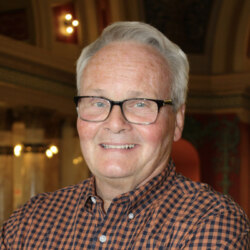Let’s Make Montana Look Like Ireland
"Though fewer people today live in the Republic of Ireland than did almost two centuries ago, they’re busy teaching the world an important lesson: economic freedom works!"
As every Montanan knows, immigrants from the Emerald Isle played an outsized role in building Montana, first as a Territory and later as a State. It’s why St. Patrick’s Day is a big deal from Billings to Bigfork. What you may not know is that Ireland today is an economic model for the world.
Montana ranks as the most Irish state west of Pennsylvania. About 145,000 people, just under 14 percent of the state’s population, claim Irish ancestry according to recent U.S. Census data. Thanks in large part to copper entrepreneur Marcus Daly (1841-1900), the cities of Butte, Anaconda and Missoula are among the most Irish in the American West. Daly, an immigrant himself from Ireland’s County Cavan, imported thousands of fellow Irishmen to Montana to work the mines. Those immigrants in turn enticed friends and relatives to come too.
In 1919, the famous Irish politician Eamon de Valera raised a bundle of money in Montana (several million in today’s dollars) in support of independence from the United Kingdom. Ireland achieved its statehood in 1922 and de Valera went on to serve many years as Prime Minister and as President.
At the start of the decade that produced the tragic potato famine, about 8.2 million people called Ireland home. That was 1841. So many people starved or emigrated in the years to follow that the population of the island never fully recovered. Today, the combined population of the Republic and the northern counties that remain part of the UK is barely 7 million.
Though fewer people today live in the Republic of Ireland than did almost two centuries ago, they’re busy teaching the world an important lesson: economic freedom works!
The Heritage Foundation’s Index of Economic Freedom ranks the Irish economy as the third freest in the world, behind Singapore and Switzerland. The United States, once consistently in the top ten, has fallen to #25.
Another measuring stick is the Fraser Institute’s broader Human Freedom Index, which considers each nation’s freedoms of speech and press, the integrity and fairness of the justice system and the vibrancy of private, civil society institutions. There too, Ireland is near the top–#5 in the world, no less—while the U.S. stands at #23.
In 2022, the Irish economy grew at the astonishing rate of 12.2 percent, the fastest on the European continent. If you think there’s no connection between Irish freedom and Irish prosperity, contact your economics teachers and demand a refund.
“Countries are well cultivated, not as they are fertile, but as they are free,” wrote the 18th Century French historian and philosopher Montesquieu. It’s no coincidence that the least free nations of the world, such as Cuba, North Korea and Venezuela, are also among the poorest.
Ireland rates high because property rights and contracts are well protected. The country’s judiciary sticks to its knitting: it interprets the law rather than cooking it up as if it were an elected legislature. The business climate is friendly because regulations aren’t nutty and intrusive, while tax rates are competitive. (In fact, the Biden administration is pressuring Ireland to raise its low 12 percent corporate income tax rate so America’s 21 percent doesn’t look so bad.)
From the Cato Institute comes the Freedom in the 50 States Index, which combines personal and economic freedoms to rank New Hampshire the best at #1 and New York dead last at #50. Montana ranks at #18, better than average but with plenty of room for improvement.
It’s freedom, not the “luck of the Irish,” that explains Ireland’s remarkable economic success. That’s just as true for a state as it is for a country. When Governor Greg Gianforte says he wants to make Montana “a sanctuary state for freedom and free markets,” he echoes the sentiments that are making Ireland great again.
*****
Lawrence W. Reed writes a monthly column for the Frontier Institute in Helena, on whose board he serves. He is president emeritus of the Foundation for Economic Education and blogs at www.lawrencewreed.com.
